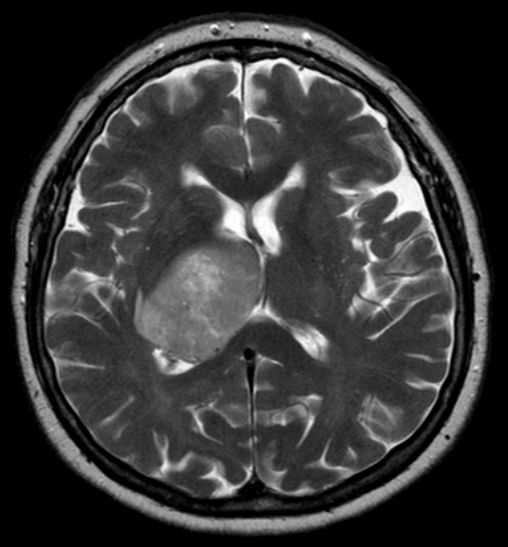
Therapeutic oligonucleotides, such as small interfering RNAs (siRNA), hold great promise for the treatment of genetically-defined disorders, including diseases of the central nervous system (CNS). These oligonucleotide-based drugs effectively and potently modulate gene expression of toxic RNAs and proteins, potentially blocking or reversing disease progression.
Despite the significant enthusiasm of the scientific community after their discovery, the premature debut of poorly stabilized siRNA constructs in the clinic resulted in early termination of trials. These events dampened the general interest in this approach, driving big pharma and major investment out of the picture.
Since then, many advancements in RNA medicinal chemistry have enabled full chemical stabilization of these molecules against nucleases without compromising their activity. Indeed, today most siRNAs in clinical development consist of highly modified scaffolds that enable weeks to months of gene silencing in targeted tissues. Progress in the field has recently resulted in the first product, Patisiran (OnpattroTM), being approved by the Food and Drug Administration (FDA) for liver diseases.
Translating the success observed with RNA interference (RNAi) technology from liver diseases to applications in the CNS faces additional long-standing hurdles in the field of pharmaceutical development. Treating the brain and the central nervous system (CNS) is extremely challenging due to the existence of highly specialized biological obstacles, such as the blood-brain barrier (BBB). As a defense mechanism, the BBB precludes free diffusion of molecules from the blood to the brain, also blocking the access of therapeutic agents administered systemically. This effect is further aggravated in the case of macromolecular negatively charged nucleic acids, which have inherent poor pharmacokinetic (PK) proprieties.
Current approaches to treat the CNS using therapeutic oligonucleotides require direct administration into the cerebrospinal fluid (CSF) in the brain or spinal cord. Generally, these approaches result in a poor distribution to deep brain structures and require neurosurgical or other specialized intervention for administration. Unfortunately, strategies that capitalize on the vast network of blood vessels within the brain are missing, most likely due to the difficulties in overcoming the BBB. Although several approaches focused on hijacking receptor systems in the BBB to transport fully modified siRNAs to the brain are being investigated, none have been able to deliver to their promise.
In our lab, we have investigated one of these molecules. The Ligand consisted of an omega-3 polyunsaturated fatty acid (phosphocholine-docosahexanoic acid, PC-DHA) that was conjugated to a fully-modified siRNA. Despite the expression of a cognate receptor in the BBB for PC-DHA, these conjugated siRNAs were not able to efficiently cross the BBB after intravenous or subcutaneous injections in mice. The levels observed in the brain would not have permitted meaningful gene silencing. Nevertheless, when locally injected in the brain, PC-DHA-siRNAs were potent inducers of gene silencing and had a favorable toxicity profile both in the CNS and systemically.
When exploring alternative approaches to enhance distribution of oligonucleotides to the CNS, we stumbled on a strategy that has been used to improve delivery of chemotherapeutics to the brain and that is now under clinical investigation. The method consisted uses a hyperosmolar solution of a sugar alcohol, mannitol, to cause osmotic stress in the brain endothelial cells leading to a transient opening of the BBB. By administering both mannitol and PC-DHA-siRNAs through the carotid artery, we achieved broad distribution in the disrupted hemisphere of the rat brain. Lipid conjugation, in this case, PC-DHA, was found to be fundamental for oligonucleotide retention and internalization (by both neurons and glia) after BBB disruption. Furthermore, in this study, tissue accumulation strongly correlated with messenger RNA silencing in various regions of the brain, including cortex, striatum, thalamus and hippocampus, a week after injection.
In this proof-of-concept study, the placement of the catheter for injection had a major impact on transvascular delivery. Regions supplied by the contralateral carotid artery or by the posterior blood flow (not from the carotid artery) showed limited distribution and gene knockdown. Furthermore, previous studies in mice have demonstrated that intravenous mannitol was not an effective strategy for oligonucleotide delivery to the brain. Thus, the injections at the level of the carotid artery seemed to allow for high concentrations of both mannitol and PC-DHA-siRNAs in the brain vasculature that enabled effective delivery to the rat brain.
The transient nature of the mannitol-induced BBB disruption is an attractive feature of this strategy since it minimizes the risk of subsequent damage or infection. In this study, BBB disruption only caused neuroinflammation in the rat brain with no major neurotoxicity detected. Additional studies are needed to evaluate the impact of long-term effects of repetitive BBB disruption, which most likely be required for delivery of gene silencing therapies to the brain. Although our studies were conducted using huntingtin (HTT) as a gene target (mutant HTT is the genetic cause of Huntington’s Disease), we believe that this strategy could be more rapidly translated for life-threating brain cancers, such as malignant glioblastomas.
In summary, these findings published in our recent article in Molecular Therapy, establish an important proof-of-concept for the use of pharmacological BBB disruption for transvascular delivery of fully modified conjugated siRNAs to the brain. Provided that the oligonucleotide is fully stabilized, this strategy may be valid for siRNAs or ASOs conjugated to other neuroactive ligands.
These findings are described in the article entitled Transvascular Delivery of Hydrophobically Modified siRNAs: Gene Silencing in the Rat Brain upon Disruption of the Blood-Brain Barrier, recently published in the journal Molecular Therapy. This work was conducted by Bruno M.D.C. Godinho, Nils Henninger, James Bouley, Julia F. Alterman, Reka A. Haraszti, James W. Gilbert, Ellen Sapp, Andrew H. Coles, Annabelle Biscans, Mehran Nikan, Dimas Echeverria, Marian DiFiglia, Neil Aronin, and Anastasia Khvorova from the University of Massachusetts Medical School, Worcester, Massachusetts.









